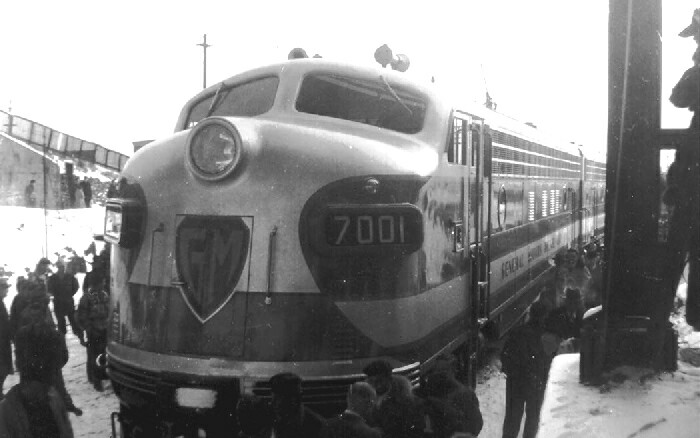
|
The following information was provided by Ian Macdonald
The first diesel locomotive through Chapleau arrived at 11:50 am on Monday, December 05, 1949 powering transcontinental Train No.3 (The Dominion) from Toronto to Vancouver. School adjourned early to allow students of all ages to join the large crowd of citizens viewing this important event. It marked the beginning of a dramatic era of change in the history of the town which concluded with complete system dieselization of the CPR in 1960. School adjourned early to allow students of all ages to join the large crowd of citizens viewing this important event. This test run is described in more detail in the accompanying article in the February-March 1950 issue of the CPR company magazine "Spanner". Additional information on the Algoma region trials and subsequent testing on Canadian Naitonal Railways and the Algoma Central Railway is described at the following link: http://www.trainweb.org/oldtimetrains/gmd/GMD.html It marked the beginning of a dramatic era of change in the history of the town which concluded with complete system dieselization of the CPR in 1960. The first diesel locomotives through Chapleau were demonstrator units built by the Electro Motive Division of General Motors Corporation, LaGrange, Illinois. The EMD FP7A and two F7B units were built in June 1949 and tested on Canadian Pacific from December 4th 1949 to February 25th 1950. They then continued on for another month until March 25th 1950 without the dynamometer car on both freight and passenger service. Overall performance of the locomotives was apparently quite good. Problems with steam generators, however, caused delay in dieselization of passenger service for several years. Additional modifications based on these trials led to installation of two direction sanding on both trucks. The demonstrator units had forward direction sand in one front truck only. Additional winterization devices were installed on production units built for CP. Paradoxically, these locomotive units were subsequently acquired by the U.S. Soo Line after completing demonstration trials in Canada. The Soo Line, as most people are aware, is now a subsidiary of Canadian Pacific. |